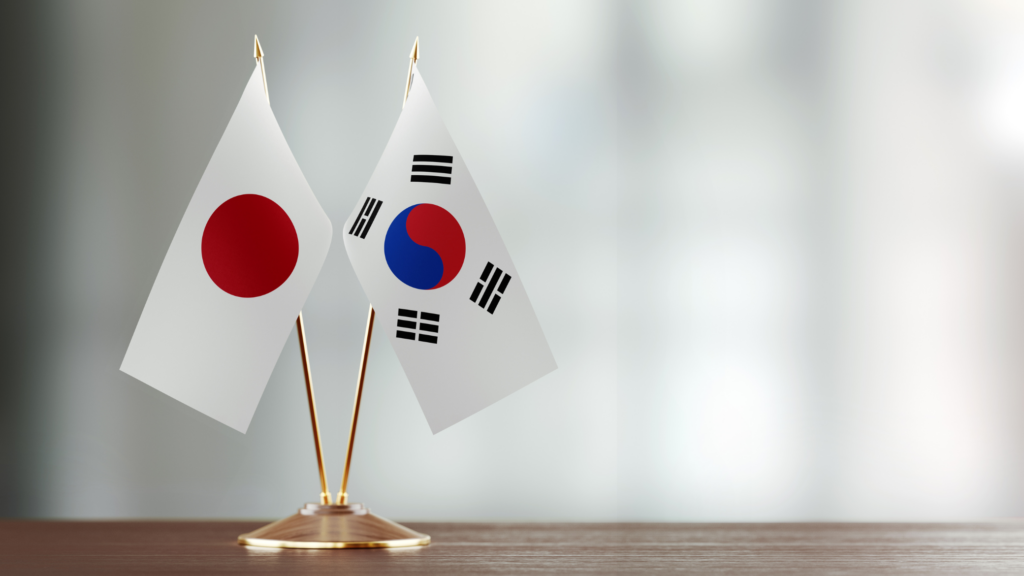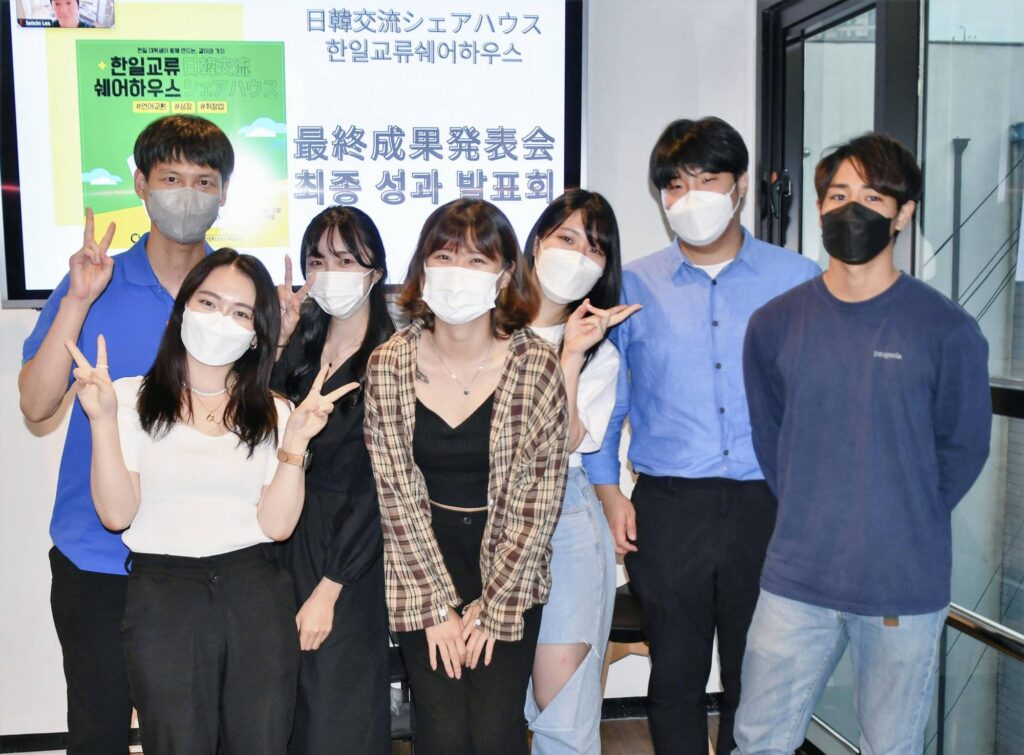Rebuilding Japan and South Korea after the devastating effects of World War II was an extraordinary journey that captured the world's attention. These nations demonstrated remarkable resilience in the face of immense challenges. By recognizing the transformative power of higher education and fostering collaboration with Western education systems, Japan and South Korea paved the way for their successful reconstruction and subsequent economic prosperity. Delving into the historical context, this essay sheds light on the pivotal roles of education and international partnerships in their remarkable recoveries.
Overcoming Devastation and Embracing Change

1. Japan's Post-War Struggles
Ravages of War and the Challenges of Reconstruction
Japan's infrastructure was indeed severely damaged during World War II, with major cities like Tokyo and Osaka experiencing widespread destruction. After the end of World War II, Japan faced immense challenges in rebuilding its devastated infrastructure and economy. The ravages of war had left cities, factories, and transportation networks in ruins. However, Japan exhibited exceptional resilience in the face of adversity, determined to rebuild and overcome the obstacles that lay before them.
The emergence of the "Reverse Course" policy and its implications
In the immediate aftermath of the war, the United States implemented the "Reverse Course" policy in Japan. This policy had dual objectives: dismantling Japan's military and promoting democratization, while also implementing measures to revive the country's economy through the encouragement of industrialization and trade. The Japanese government actively embraced these changes and collaborated with the United States in the nation's reconstruction efforts. As a result, Japan experienced a significant shift in priorities, with a strong emphasis placed on economic growth and the rebuilding of the nation.
2. South Korea's Battlefields and the Korean War
The Impact of wartime destruction on South Korea
The Korean War, which erupted in 1950, resulted in widespread devastation and loss of life. Numerous cities and infrastructure in South Korea were heavily damaged during the conflict. The war not only inflicted severe physical destruction but also created significant economic setbacks for the country. South Korea faced immense challenges in rebuilding and recovering from the devastating effects of the war, including the reconstruction of infrastructure and overcoming the economic difficulties caused by the conflict.
The urgent need for rapid recovery and development post-Korean War
In the aftermath of the Korean War, South Korea acknowledged the pressing need for rapid recovery and development. The government implemented focused policies aimed at rebuilding the nation's economy, improving infrastructure, and attracting foreign investments. The determination of South Korea to rebuild and develop its economy became a central driving force behind its subsequent success. The country's post-war period was marked by a strong emphasis on rebuilding its economy and infrastructure, reflecting the government's unwavering commitment to revitalizing the nation.
Higher Education as the Path to Success

1. Japan's Academic Excellence
Establishing renowned universities and research institutions
Japan indeed recognized the significance of education in its reconstruction efforts. The country established renowned universities and research institutions that placed a strong emphasis on academic excellence and innovation. Institutions such as the University of Tokyo, Kyoto University, and Osaka University emerged as centers of excellence across various fields. These universities have consistently ranked among the top universities in the world, further highlighting Japan's commitment to providing exceptional education and fostering innovation.
Investing in quality education for a skilled workforce
Furthermore, Japan made substantial investments in education to nurture a skilled workforce. The government implemented policies aimed at improving access to high-quality education at all levels. By prioritizing education, Japan sought to equip its citizens with the essential knowledge and skills needed to contribute to the country's economic growth. Japan's unwavering commitment to education played a significant role in cultivating a highly skilled workforce. This commitment, coupled with its emphasis on innovation, has propelled Japan to a global leadership position in technology and innovation. The country's highly skilled workforce has been instrumental in driving technological advancements and contributing to its reputation as a global leader in various industries.
2. South Korea's Educational Reforms
Enhancing Educational Standards and Access:
Improving Quality Education at All Levels:
South Korea implemented policies to enhance the quality of primary and secondary education, ensuring that students received a robust foundation in various academic disciplines. Efforts were made to improve educational standards and provide access to high-quality education for all citizens.
Fostering a Robust Foundation in Various Disciplines:
The government's focus was on developing a comprehensive educational system that emphasized a well-rounded education. By promoting a broad range of subjects and disciplines, South Korea aimed to equip students with diverse knowledge and skills to thrive in an evolving society.
Emphasis on STEM Education:
Recognizing the Importance of Science, Technology, Engineering, and Mathematics:
South Korea acknowledged the pivotal role of STEM fields in driving technological advancements and fostering innovation. The educational reforms placed a specific emphasis on developing expertise in science, technology, engineering, and mathematics, aligning the curriculum with the demands of a rapidly changing global landscape.
Equipping Students with Skills for Technological Advancements:
By prioritizing STEM education, South Korea aimed to equip students with the necessary skills, knowledge, and problem-solving abilities to excel in the fields of science, technology, engineering, and mathematics. The goal was to prepare a highly skilled workforce capable of contributing to technological advancements and innovation.
Renowned Educational System:
Rigorous Academic Standards:
South Korea's educational system gained recognition for its rigorous academic standards, emphasizing excellence and high-quality education. The focus on academic rigor aimed to foster a culture of academic excellence and intellectual growth among students.
Producing Highly Skilled Professionals:
The educational reforms in South Korea were successful in producing highly skilled professionals across various fields. The emphasis on educational excellence and the specific focus on STEM education resulted in a workforce equipped with the knowledge and expertise to contribute to South Korea's technological and economic growth.
Collaborating with the West for Educational Advancement
1. Japan's Pursuit of International Partnerships:
Engaging with leading universities in the United States and Europe
Japan actively pursued international partnerships with leading universities in the United States and Europe. The government encouraged academic exchanges and collaborations, allowing Japanese scholars and students to learn from and contribute to cutting-edge research and advancements in various fields.
Fostering a culture of innovation and knowledge transfer through collaborations
These partnerships also facilitated the transfer of knowledge and technology from the West to Japan. Japanese scholars and researchers gained exposure to global perspectives and innovative practices, which played a crucial role in shaping Japan's educational and research landscape.
2. South Korea's Integration of Western Educational Practices:
Establishing partnerships and exchange programs with Western institutions
Similarly, South Korea sought to integrate Western educational practices into its system. The country established partnerships and exchange programs with Western institutions, enabling students and educators to experience different educational environments and learn from international best practices.
Leveraging global perspectives to Enhance the education system
By embracing global perspectives, South Korea enhanced its educational system and fostered a culture of innovation. Collaboration with the West provided access to advanced teaching methodologies, research opportunities, and expertise that propelled South Korea's education sector forward.
Building a Skilled Workforce and Fueling Economic Growth
Creating a Highly Skilled Workforce:
Equipping individuals with the necessary knowledge and skills through education
Both Japan and South Korea's focus on education and collaboration with the West resulted in the creation of highly skilled workforces. By investing in education and fostering academic excellence, these nations produced graduates who possessed the knowledge and skills needed to thrive in a rapidly changing world.
Driving innovation and technological advancements across industries
The emphasis on STEM education in both countries contributed to the development of a workforce adept in technological advancements and innovation. These skilled professionals became the driving force behind various industries, including manufacturing, electronics, automotive, and information technology.
Fueling Sustainable Economic Growth:
Transitioning from reliance on cheap export labor to knowledge-based industries
Japan and South Korea underwent a significant transformation in their economic landscapes. Initially relying on cheap export labor, they transitioned to knowledge-based industries. By harnessing the potential of their skilled workforces, they shifted their focus towards innovation, research and development, and high-value-added products and services.
Garnering global recognition as an economic powerhouse
This transition propelled Japan and South Korea to the forefront of global economic powerhouses. They garnered international recognition for their advanced technologies, high-quality products, and global competitiveness. Today, both nations continue to drive sustainable economic growth and serve as models for other countries aspiring to achieve similar success.
Inspiring Models of Resilience and Educational Collaboration: Lessons from Japan and South Korea
 The remarkable reconstruction of Japan and South Korea after World War II is a testament to their resilience and determination. These nations recognized the significance of higher education and embraced collaboration with the West, leading to unprecedented economic prosperity.. Moreover, by recognizing the importance of higher education and actively embracing collaboration with the West. Both Japan and South Korean nations propelled themselves towards unprecedented economic prosperity. Through the establishment of renowned universities, Japan and South Korea made significant investments in education. They also formed strategic partnerships with leading institutions abroad. These efforts successfully fostered a highly skilled workforce capable of driving innovation. Today, Japan and South Korea stand as shining examples of the transformative power of education and international collaboration. Their success stories inspire nations worldwide to invest ardently in knowledge-driven growth for a brighter future.
The remarkable reconstruction of Japan and South Korea after World War II is a testament to their resilience and determination. These nations recognized the significance of higher education and embraced collaboration with the West, leading to unprecedented economic prosperity.. Moreover, by recognizing the importance of higher education and actively embracing collaboration with the West. Both Japan and South Korean nations propelled themselves towards unprecedented economic prosperity. Through the establishment of renowned universities, Japan and South Korea made significant investments in education. They also formed strategic partnerships with leading institutions abroad. These efforts successfully fostered a highly skilled workforce capable of driving innovation. Today, Japan and South Korea stand as shining examples of the transformative power of education and international collaboration. Their success stories inspire nations worldwide to invest ardently in knowledge-driven growth for a brighter future.